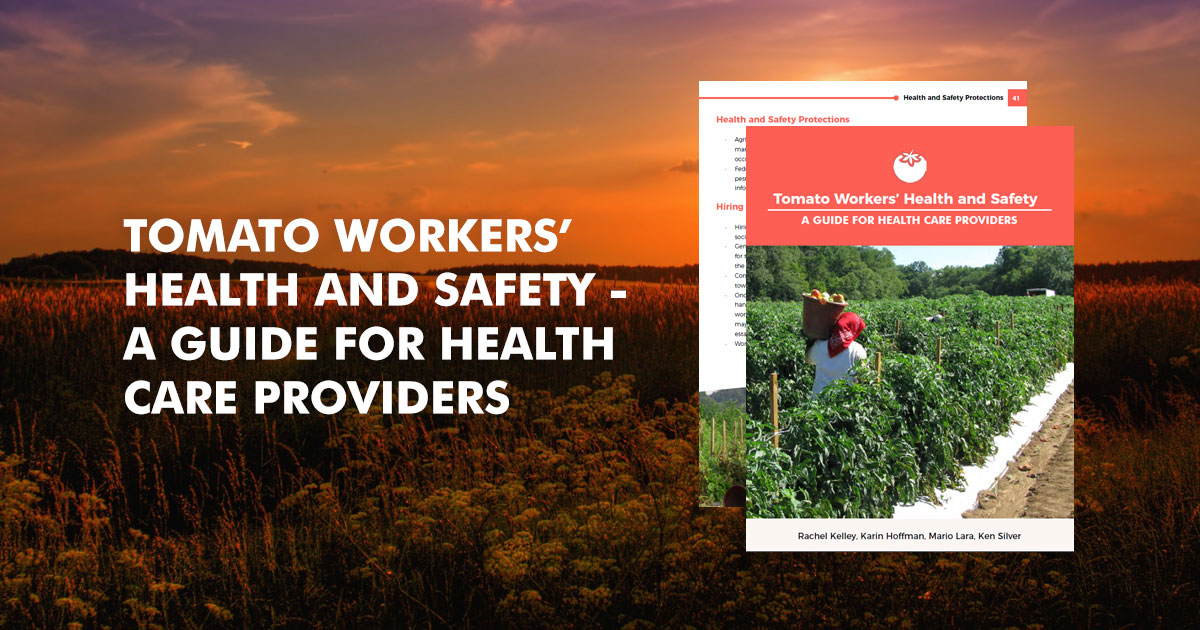This comic book in English and Spanish conveys basic information on respiratory health and air pollution. It reviews the respiratory system, particulate matter and sources of air pollution. It also talks about ways workers and their families can protect themselves.
- Clear-the-Air-Protect-Your-Health-From-Bad-Air_5-22-24_Digital.pdf (3.08 MB)
- COMIC RESPIRATORY PROBLEMS FINAL VERSION ENGLISH 22 MAY 2024.pdf (17.59 MB)
- Clear-the-Air_Comic_5-22-24_Template.pdf (21.78 MB)
- Nadie-sabe-que-respira-hasta-que-la-falta-el-aire_5-22-24_Digital.pdf (3.1 MB)
- COMIC SPANISH PROBLEMAS RESPIRATORIOS FINAL VERSION 22 MAYO 2024.pdf (17.69 MB)
- Nadie-sabe-que-respira_5-22-24_Comic+Logo.pdf (21.94 MB)
Adults Get Vaccinated Too is an educational tool in the form of a comic book for health educators who work with the community and who need to provide information about vaccinations, when and where they are administered, and the symptoms that characterize the diseases they prevent.
Through a conversation between farmworkers in the field, this colorful and easy-to-understand comic book helps its readers to learn, in a simple and natural way, the importance of getting vaccinated and boosting their vaccines during their adulthood to prevent diseases such as hepatitis B, meningitis, chickenpox, influenza, tetanus, diphtheria, pertussis, measles, mumps, rubella and COVID-19.
- Adults Get Vaccinated Too-Comic_2024-3-7_Digital.pdf (4.53 MB)
- Adults Get Vaccinated Too-Comic_2024-3-7_Print.pdf (45.12 MB)
- Adults-Get-Vaccinated-Too_Comic_2024-5-9_Template.pdf (44.37 MB)
- Los-grandes-tambien-se-vacunan_Comic_2024-3-7_Digital.pdf (4.1 MB)
- Los-grandes-tambien-se-vacunan_Comic_2024-3-7_Imprimir.pdf (49.42 MB)
- Los-grandes-tambien-se-vacunan_Comic_2024-5-9_Plantilla.pdf (47.83 MB)
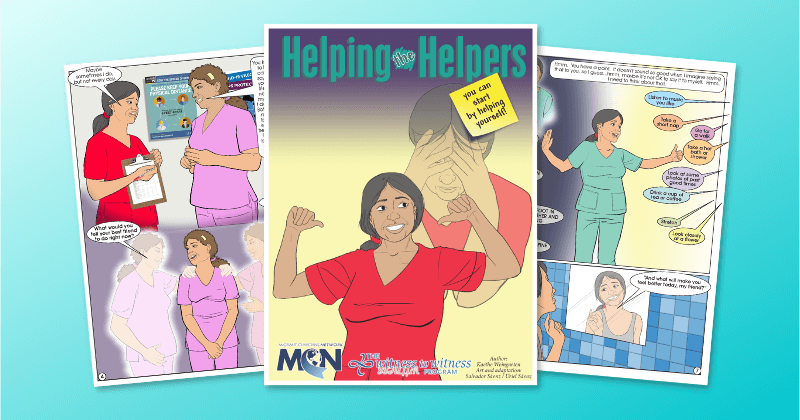
Among the many obligations health care providers have to their patients, their families and life in general, they forget to put themselves on the priority list. This comic book dedicated to health care providers reminds them how important it is to take care of themselves to meet the needs of their patients and families. It also offers simple self-care steps to improve overall wellness.
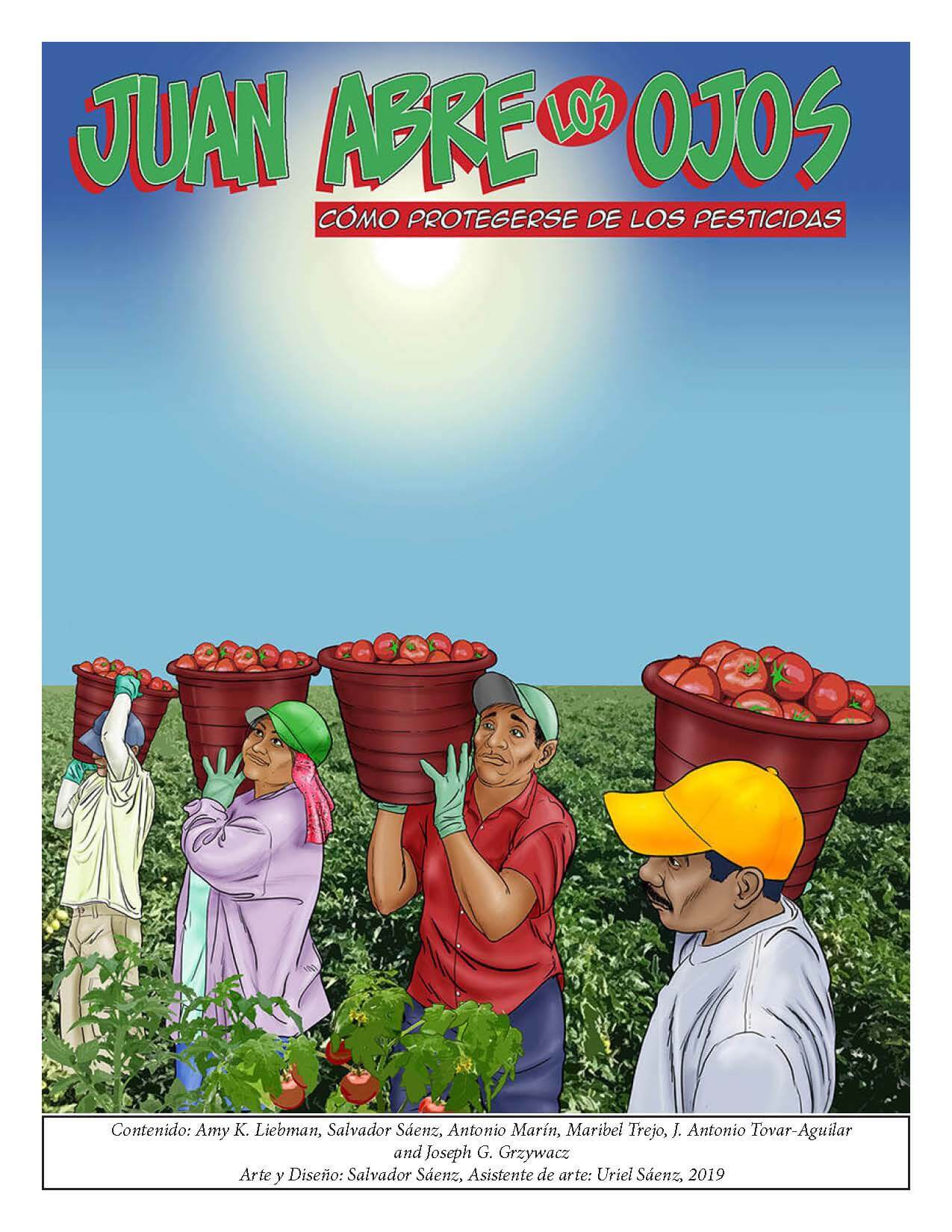
This comic book tells us how Juan learned to protect himself from pesticides at work. This resource presents in a very simple and entertaining way what are the sources of exposure to pesticides, their short- and long-term effects on the body, and what can be done to protect oneself from them. It is a great resource for farmworkers and promotores de salud!
- 2024-08-05_Model_depliyan_sou-vaksen-COVID-pou-fanm-ansent.pdf (548.78 KB)
- 2024-08-05_Model_depliyan_sou-vaksen-COVID-pou-fanm-ansent.pptx (9.64 MB)
- 2024-08-05_Pregnancy-COVID-Vaccine-Trifold_Handout_Template.pdf (548.41 KB)
- 2024-08-05_Pregnancy-COVID-Vaccine-Trifold_Handout_Template.pptx (9.65 MB)
- 2024-08-05_Embarazo-COVID-Vacuna-Tríptico_Material-de-apoyo_Plantilla.pptx (9.65 MB)
- 2024-08-05_Embarazo-COVID-Vacuna-Tríptico_Material-de-apoyo_Plantilla.pdf (587.29 KB)
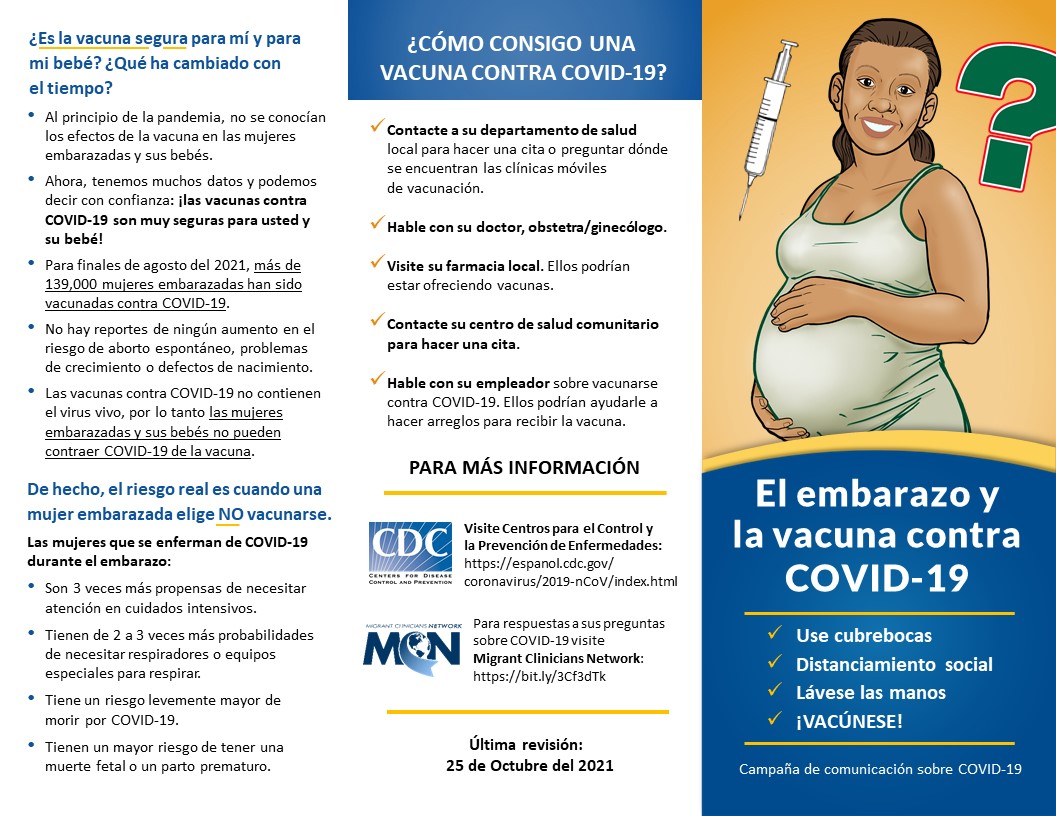
- 1-15-22_Spanish_Pregnancy-COVID-vaccine_Trifold_0.pdf (659.22 KB)
- 1-15-22_Spanish_Pregnancy-COVID-vaccine_Trifold-Template_0.pptx (9.05 MB)
- 1-15-22_English_Pregnancy-COVID-vaccine_Trifold_0.pdf (671.73 KB)
- 1-15-22_English_Pregnancy-COVID-vaccine_Trifold-Template_0.pptx (9.04 MB)
- 1-15-22_HaitianCreole_Pregnancy-COVID-vaccine_Trifold_0.pdf (654.59 KB)
- 1-15-22_HaitianCreole_Pregnancy-COVID-vaccine_Trifold-Template_0.pptx (9.02 MB)
This resource provides information regarding COVID-19 vaccination and pregnancy. It confirms that the COVID-19 vaccine is completely safe to receive before, during, and after pregnancy. Additionally, it provides resources for more information including places you can go to receive a vaccination, and overviews vaccine effectiveness and COVID-19 prevention. This resource is available in pre-made and template format, and in three languages including English, Spanish, and Haitian Creole.
- 2024-08-05_Pregnancy-COVID-Vaccine-Trifold_Handout_Template.pdf (548.41 KB)
- 2024-08-05_Pregnancy-COVID-Vaccine-Trifold_Handout_Template.pptx (9.65 MB)
- 2024-08-05_Embarazo-COVID-Vacuna-Tríptico_Material-de-apoyo_Plantilla.pdf (587.29 KB)
- 2024-08-05_Embarazo-COVID-Vacuna-Tríptico_Material-de-apoyo_Plantilla.pptx (9.65 MB)
- 2024-08-05_Model_depliyan_sou-vaksen-COVID-pou-fanm-ansent.pdf (548.78 KB)
- 2024-08-05_Model_depliyan_sou-vaksen-COVID-pou-fanm-ansent.pptx (9.64 MB)
Worker Protection Standard Pesticide Safety Training Curriculum - Culturally and linguistically appropriate curriculum with supporting resources for training workers on the revised Worker Protection Standard. Developed by the Florida State University PISCA Project and Migrant Clinicians Network.
- WPS PesticidasEnglishFINAL4_2021Website.pptx (33.52 MB)
- WPS PesticidasSpanishFINAL4_2021_Website.pptx (19.67 MB)
- WPSPesticidesFlipChartFINAL_1_23_2020.pdf (8.32 MB)
- WPS Pesticide Facilitator Guide English 2020.pdf (2.03 MB)
- WPS Pesticide Training Facilitator Guide Spanish 2020.pdf (1.99 MB)
- Juan Abre los Ojos como protegerse de los pesticidas (01 14 2020)_0.pdf (7.25 MB)
Diabetes is a common but complicated health condition facing agricultural workers within the United States. To help assist agricultural workers in learning about this diagnosis, Migrant Clinicians Network has partnered with professional artist and collaborator Salvador Sáenz to create “Mi salud es mi tesoro: Un guía para vivir bien con diabetes,” or, “My Health is My Treasure: A Guide to Living Well with Diabetes.” This low-literacy comic book explores the topic through the full-color story of an agricultural farmworker named Goyo, whose recent diagnosis of diabetes prompts him to engage in conversations with other agricultural workers on topics of diet, exercise, and illness prevention while facing the unique hurdles of living a life of migration. The comic book was originally produced in Spanish, and is now available in English below. Please click "Leer en español" above to access the Spanish-language version.
In order to print the right number of comic books, we are asking organizations to pre-order in quantities up to 500. The comic book and shipping will be paid for by MCN. In exchange, we simply ask that you, or someone from your organization, complete an evaluation of the comic book several months after you first receive it. Information from the evaluation will help us improve our resources and will give us important insight into how the comic book is being used in the community.
Download a digital copy of the comic book below!
- 2022-6-13_My-Health-Is-My-Treasure_Comic_WEB.pdf (4.97 MB)
- 2022-6-13_My-Health-Is-My-Treasure_Comic_PRINT.pdf (38.95 MB)
- 2023-8-4_Mi-salud-es-mi-tesoro_Comic_WEB_0.pdf (4.87 MB)
- 2023-8-4_Mi-salud-es-mi-tesoro_Comic_PRINT.pdf (38.74 MB)
- 2023-8-21_Mi-salud-es-mi-tesoro_PuertoRico_Web_0.pdf (5.74 MB)
- 2023-8-21_Mi-salud-es-mi-tesoro_PuertoRico_PRINT.pdf (40.76 MB)
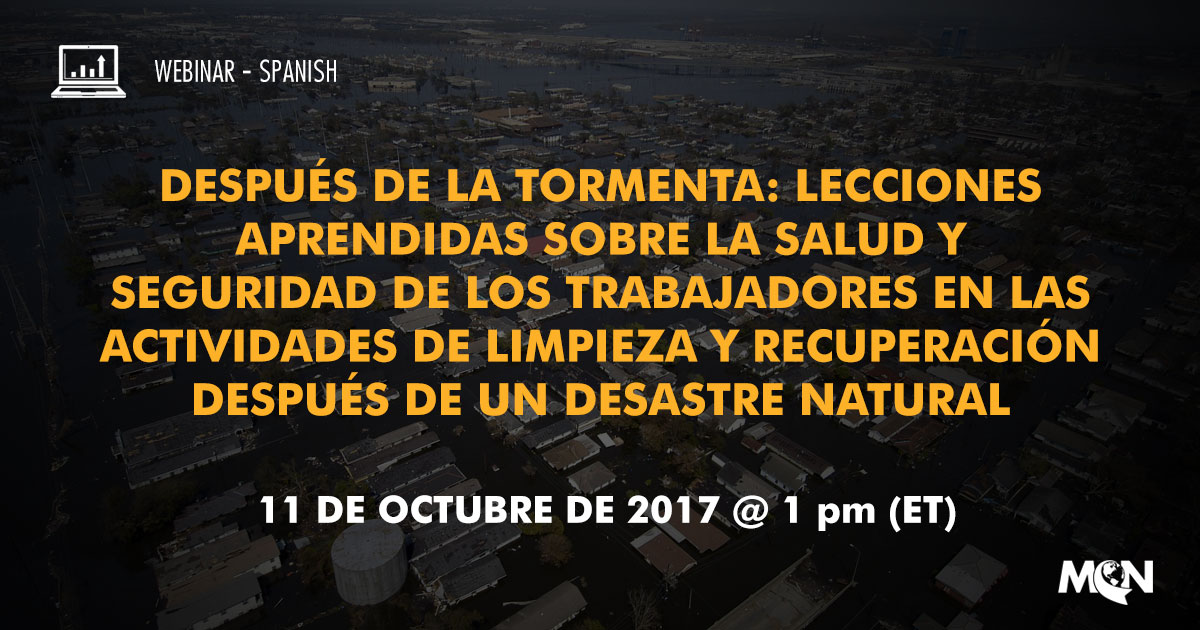
FECHA: 11 de Octubre de 2017 @ 1 PM (ET)
PRESENTADORES:
- Alma R. Galván, MHC, Migrant Clinicians Network
- Richard Rabin, MassCOSH
- Rossana Coto-Batres, MSW, Northeast New York Coalition for Occupational Safety and Health (NENYCOSH)
Crédito de educación continua
Para recibir credito de Trabajador/a de Salud Comunitaria o Educacion de Continua de Enfermera después de ver alguno de estos seminarios usted debe hacer lo siguiente:
- Completar la evaluación participante asociado a cada webinar
- Enviar un correo electrónico con su nombre y apellido indicando que ha completado a malvarado@migrantclinician.org
Descripción
Conforme las familias regresan a sus hogares en Houston, una vez que las inundaciones causadas por los Huracanes Irma y María se van retirando, esto se convierte en una carrera contra el tiempo. Un olor sofocante llena los cuartos de las casas, los charcos permanecen en los pasillos, y el moho se multiplica rápidamente. En cuestión de días, los patios ensopados de los vecinos se convierten en tiraderos de basura, conforme los trabajadores empiezan a quitar de las casas las paredes con moho, los pisos y los cielos destruidos, así como los muebles dañados. En este proceso, los trabajadores y muchos residentes se exponen al agua contaminada con químicos y basura, materiales de construcción peligros y alimañas dañinas. Pero hay otros riesgos adicionales, estructuras inestables y posibles intoxicaciones por monóxido de carbono de los generadores que trabajan incansablemente en espacios con poca ventilación. La exposición a asbestos, sílice y plomo son también peligros comunes para estos trabajadores.
Katrina, Sandy, Harvey, Irma y ahora Maria: son nombres de tormentas que nos indican las diferentes comunidades que terminaron bajo el agua, pero muchas de las historias emanadas de ellas, sobre la limpieza -- y los peligros involucrados-- son las mismas. Con resiliencia y determinación, las comunidades se tratan de reconstruir, pero la reconstrucción necesita una fuerza de trabajo inmediata, lista para este trabajo peligroso y extenuante.
Las operaciones de recuperación después del desastre, limpieza y reconstrucción presentan muchos riesgos y peligros para los trabajadores. Muchos de ellos realizan este trabajo sin el equipo de seguridad o el entrenamiento de mitigación de peligros adecuado.
En la recuperación de una supertormenta, ¿cuáles son las vulnerabilidades que los trabajadores enfrentan y qué significa eso para la seguridad y la salud del trabajador? Las siguientes preguntas surgen para los proveedores y trabajadores de salud comunitarios que cuidan y se preocupan por estos trabajadores: ¿cuáles son los puntos claves que necesitamos entender para poder cuidar de aquellos involucrados en estos esfuerzos de limpieza y reconstrucción? y ¿qué podemos hacer para que ellos mismos prevengan las lesiones y las enfermedades?
Este seminario en línea recupera experiencias obtenidas de desastres naturales anteriores y ofrece recursos que le pueden guiar en su trabajo. Ofreceremos casos reales para ilustrar los peligros y revisaremos formas en que los trabajadores se pueden proteger a sí mismos, incluyendo el entendimiento de sus derechos y responsabilidades.
Objetivos de aprendizaje
- Los participantes identificarán los peligros más comunes y críticos que los trabajadores y residentes encuentras cuando se involucran en la demolicion y reconstruccion despues de un desastre.
- Los participantes articularán las mejores estrategias para educar a los trabajadores y residentes sobre como prevenir lesiones y enfermedades durante las actividades de limpieza y reconstrucción después de huracanes y supertormentas.
- Los participantes enlistarán al menos tres recursos que pueden usar para guiar a los trabajadores y residentes durante la demolición y reconstrucción después de un desastre.
Este proyecto cuenta con el apoyo de la Administración de Recursos y Servicios de Salud (HRSA) del Departamento de Salud y Servicios Humanos de los Estados Unidos bajo el acuerdo de cooperación número U30CS09742, Asistencia Técnica a Centros de Salud Comunitarios y Migrantes y Personas sin Hogar por $ 1,094,709.00 con 0% del total Proyecto NCA financiado con fuentes no federales. Esta información o contenido y las conclusiones son las del autor y no deben ser interpretadas como la posición o política oficial de, ni cualquier endosos deben ser inferidos por HRSA, HHS o el Gobierno de los Estados Unidos.
Available in English and Spanish!
Created by MCN, medical student Rachel Kelley of UCSF, and collaborators at East Tennessee State University, this guide is intended to be a reference for health care providers who work with people employed in the U.S. tomato industry. It aims to prepare providers with a more detailed understanding of hazards, health issues, and work processes associated with different tomato industry jobs.
This guide draws on published research, experienced health professionals’ advice, and information gathered from interviews and focus groups conducted with 36 tomato workers from diverse backgrounds and 14 community leaders familiar with tomato workers’ health in multiple states. It is important to note that health and safety conditions at any particular farm or company may vary from what is described here. Furthermore, individual workers may experience the same set of conditions differently.
The first section of the guide focuses on health hazards and health conditions commonly encountered in tomato production. The second section consists of detailed descriptions and illustrations of different tomato production tasks. The third section covers “human resources” information and policies that apply to U.S. agricultural workers generally. The appendices contain a Spanish-English glossary, further detail about different types of pesticides, information about agricultural occupational health policies and regulation, and a list of resources and readings.
Information from the CDC on the Zika Virus and pregnant women.
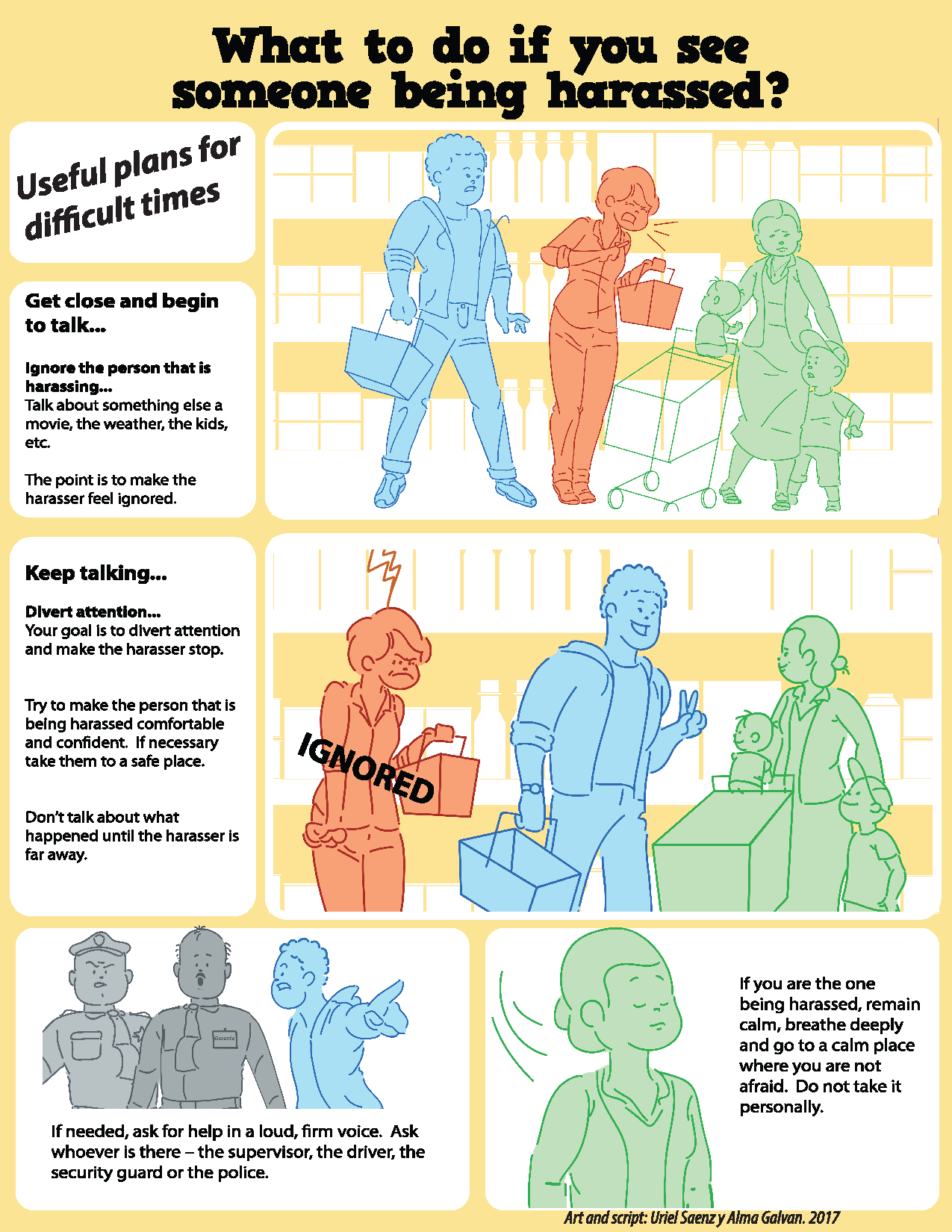
A guide to know how to react when you see someone being harassed. Art and script by Uriel Saenz and Alma Galván.
Chapter 14: Pesticides Are Poison from the Hesperian.org health guide: A Community Guide to Environmental Health.

DATE RECORDED: August 17, 2016 at 1 pm ET
PRESENTED BY: Amy Liebman, MPA, MA and Wilson Augustave, member of MCN’s Board of Directors and Senior HIV Case Manager at Finger Lakes Community Health
This material will be produced under grant number SH-27640-15-60-F-48-SH5 from the Occupational Safety and Health Administration, U.S. Department of Labor. It will not necessarily reflect the views or policies of the U.S. Department of Labor, nor does mention of trade names, commercial products, or organizations imply endorsement by the U.S. Government.
- http://migrantclinician.adobeconnect.com/p50hmpih2ti/?OWASP_CSRFTOKEN=3e2b187aeeb1282a41d5df37d8a98c307a7e00006662aca9d5f21dc12aa036c4
- http://www.migrantclinician.org/
- http://workerscomphub.org/
- http://workerscomphub.org/navigating-system
- https://www.osha.gov/workers/index.html
- http://www.coshnetwork.org/know-your-rights
- http://hesperian.org/books-and-resources/
Este diccionario ilustrado bilingüe de MCN, "Seguridad en Palabras/ Safety in Words", muestra los peligros que hay en el lugar de trabajo y las mejores prácticas para la salud y la seguridad en la agricultura. Desarrollado con el apoyo del Programa de Subvenciones Susan Harwood de OSHA, este recurso refuerza el vocabulario en inglés de los trabajadores que hablan español lo que ayudará a prevenir lesiones en la agricultura.
This colorful bilingual comic addresses workers' compensation and immigrant dairy farm workers’ rights and responsibilities. It tells the story of a Mexican dairy farm worker who is injured on the job and the steps he and his employer take to make sure he receives his benefits, and the farm improves its safety.
- DairyWrkrRightsWrkComp_ENG2016_web.pdf (7.78 MB)
- DairyWrkrRightsWrkComp_ESP2016_web.pdf (7.92 MB)
- COMIC - Safety and Health on the Farm - New Mexico - English.pdf (3.4 MB)
- COMIC - Safety and Health on the Farm - New Mexico - Spanish.pdf (3.41 MB)
- COMIC - Safety and Health on the Farm - New York - English.pdf (3.45 MB)
- COMIC - Safety and Health on the Farm - New York - Spanish.pdf (3.46 MB)
- COMIC - Safety and Health on the Farm -Minnesota -English.pdf (7.78 MB)
- COMIC - Safety and Health on the Farm - Minnesota - Spanish_0.pdf (7.91 MB)
¡Cuídate! is an educational resource on the prevention of musculoskeletal injuries at work. This comic is in Spanish, English and Haitian Creole.
- injury prevention ENGLISH 2019.pdf (19.34 MB)
- injury prevention SPANISH 2019.pdf (11.9 MB)
- injury prevention WEB CREOLE AUG 14 2019.pdf (12.77 MB)
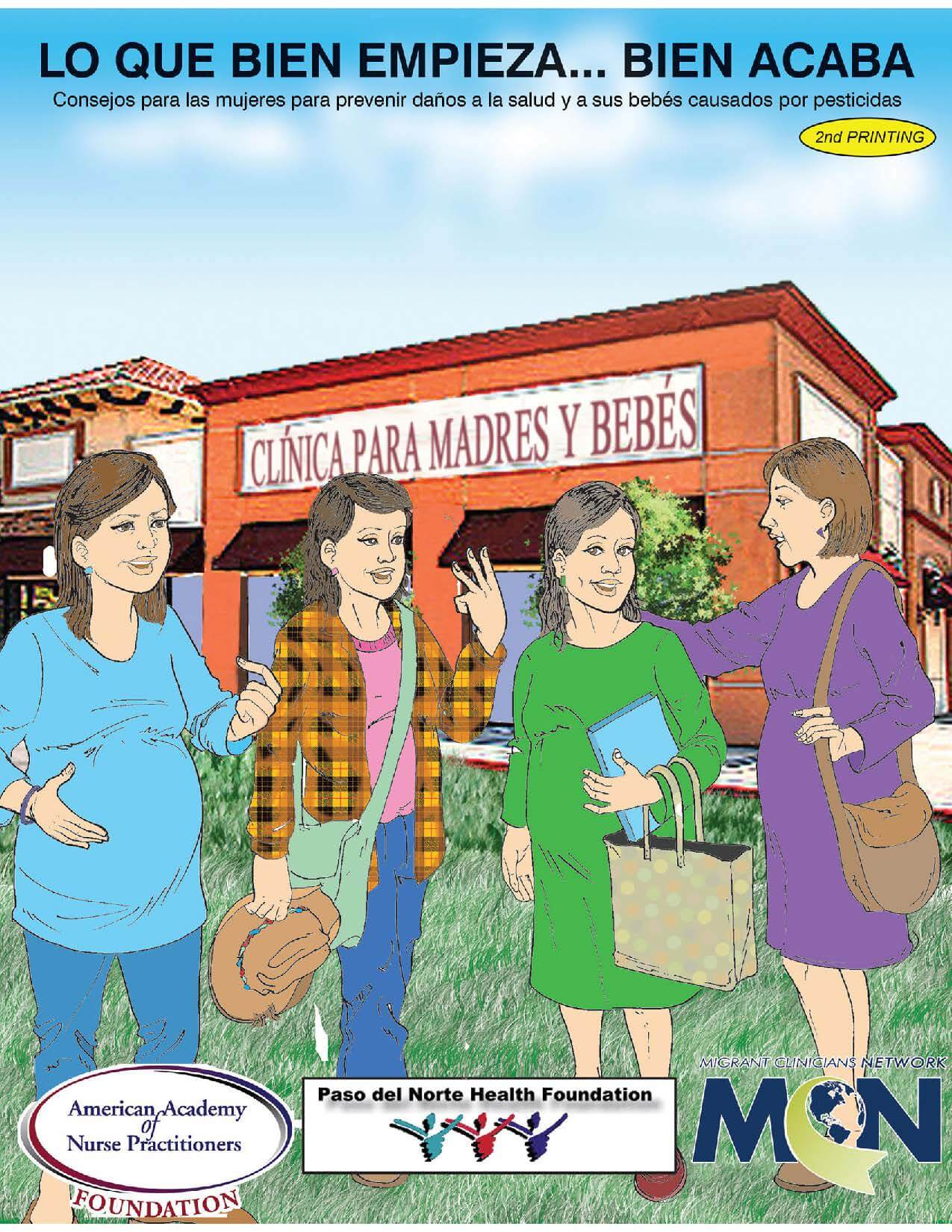
MCN Spanish educational comic book that addresses pesticide exposure in women of reproductive age. LO QUE BIEN EMPIEZA...BIEN ACABA: Consejos para las mujeres para prevenir daños a la salud y a sus bebés causados por pesticidas.
- lo que bien empiezacomic 2015-20mb.pdf (16.45 MB)
Educational comic book about the sources of indoor pollution and ways to minimize exposure. Offers safe alternatives to clean homes. English and Spanish.
- BreathingEasyComicEng.pdf (2.36 MB)
- UnaCasaLibreDeProblemasRespiratorias.pdf (2.85 MB)
This pesticide comic book targets migrant and seasonal farmworker families to educate parents about children's risks to pesticide exposure and ways to minimize these risks. The latest edition is currently only available Spanish though we are working on releasing an updated version of the comic in English.
We are currently "sold out" of our printed pesticide comic book. We are looking for additional funding. In the meantime, please download an e-copy.
- PesticidesNearbyButHealthyENG_2007_0.pdf (1.33 MB)
- AUNQUE-CERCA-SANO-2020_PRINT.pdf (21.69 MB)
A Spanish language trifold with pesticide safety information.
- TrCaptico_pesticidas.pdf (7.28 MB)
A Spanish language comic books that explains the dangers of pesticides and offers practical, less toxic approaches to pest control. Produced by the Center for Environmental Resource Management at UTEP.
The manual is a guide that can be used by community workers, educators, and health promoters for their educational activities in the community. It provides information on the risks of exposure to environmental contaminants and pesticides and ways to reduce those risks. It also includes useful information and tips for working in the community.
As for the comic book, community workers, educators and health promoters can use it as an educational tool to inform their community about the risks of environmental contaminants and pesticides.
- pocovenenocomicless20.pdf (16.8 MB)
- A LITTLE POISON WILL IT KILL YOU_June-2019.pdf (5.14 MB)
- Poco Veneno No Mata 2nd Edition - June2019.pdf (5.27 MB)
Pesticide and Pregnancy Handout, English and Spanish, from the Wake Forest University School of Medicine.
- PesticideandPregnancyHandoutEnglish.pdf (3.45 MB)
- PesticideandPregnancyHandoutSpanish.pdf (3.79 MB)
